DIY giant cross-stitch on a canvas

I learned how to cross-stitch in my preteens. I didn’t stick with it for long because I found it tedious. My mind wandered out of boredom, and soon I’d discover that I’d made a mistake five stitches back, and I’d have to pull it out and start again.
And the cutesy-folksy cross-stitch patterns available back then (we’re talking pre-Internet) left me cold.
Lately, though, I’ve been seeing lots of modern, oversized cross-stich art online. The designs are stitched on pegboard, wire mesh, furniture — even colanders. Or they’re painted trompe l’oeil style on walls or sheets of plywood.

Oversized cross-stitching is genius! I mean, if you’re going to do all the work to painstakingly stitch by hand, then the finished product might as well make as big an impact as possible. To me, a tiny little cross-stitch sampler doesn’t give you enough bang for your buck, so to speak.
I wanted a big piece of wall art with the texture of real cross stitch, and I didn’t want holes in places where I wasn’t going to stitch. Stitching with yarn on a large stretched canvas was the solution I came up with — mostly because I had an unused canvas sitting around.

This cross-stitch design is based on a greeting card by Rifle Paper Co. I created it by pixelating the image in Photoshop, tracing the image and simplifying the color palette in Illustrator, then converting the image to X’s in InDesign. You can download the pattern for free below.
Each of the X’s is one inch square. I wanted to make as few stitches as possible to mimic the effect of an impressionistic painting — and to make it faster to stitch. If you stand back from the art or squint your eyes, you can almost visualize the original illustration.

Finding affordable yarn in the colors I wanted wasn’t easy. I had to modify the pattern to fit the colors of yarn I found. In the end, I used seven skeins of Red Heart Super Saver Yarn (sourced from Joann and Walmart) for a total of nine colors.
Using multiple colors in an ombre skein is a time-consuming process because finding the transitions between each of the colors isn’t easy. I don’t recommend it. I ended up wrapping the yarn around an empty wrapping paper tube so I could more easily discern each of the distinct colors. It would have been much faster and easier to just buy three different solid-colored skeins.

Oversized cross-stitching on canvas is amazing, but it has its drawbacks.
For one, it’s more of an upper-body workout than cross-stitching of old ever was. My fingers, arms, and shoulders were sore after a long stitching session. On second thought, getting a workout while creating something beautiful might not be a bad thing!
Working around the wood supports on the back of the canvas can be a pain. As is pulling a wide-eyed needle through the tight weave of the fabric. And reaching the middle of the canvas to make your stitches can be a stretch. I enlisted my husband’s help a few times to take advantage of his long arms.
How to make a giant cross-stitch on canvas
SUPPLIES & TOOLS
INSTRUCTIONS

1. Download and print the pattern. Trim only the outside edges that you need to trim in order to tape the sheets together. The sheets are numbered left to right, top to bottom.
Tip: Use small pieces and a minimal amount of tape. Don’t tape over the corner intersections of squares because it will be difficult to get your needle through the tape.

2. Paint your canvas any color or pattern you want — or leave it blank. I used some leftover interior house paint I had on hand for touching up our bedroom walls.

3. Adhere the assembled pattern to the front of your canvas with a few pieces of cellophane tape around the edges.

4. Use an upholstery needle (because it’s sharp, long, and has a large eye) to poke holes through each corner intersection of the squares. I used a 10-inch upholstery needle. Pull the needle all the way through to make a bigger hole so it’s easier to sew later.

5. Remove the large pattern when you’re done. Check to make sure you didn’t miss any holes.

6. Use three strands of yarn. I started with a yard and a half. Tie a knot in the end and use a needle threader to thread each of the strands.
Tip: Although making the tail long might seem smart because you don’t have to pull through as much yarn with each stitch; however, a shorter tail is better because it’s easier to pull three strands through than six stands.

7. Tools that make the cross-stitching easier include a tapestry needle (which has a blunt tip), a needle gripper (to help you pull through stubborn strands of yarn), and a needle threader (a huge time-saver).

8. My aunt, who taught me to cross-stitch, said that you should stitch in the same order for all of the X’s in your design. And, if you’re en expert cross-stitcher, the back is supposed to look as clean as the front. Well, I’m not an expert cross-stitcher, so I’m not going to show you the back of mine. :-)

9. Finish each color before moving on to the next one. Tie off the yarn before it gets too short to do so, and start again with three more strands of yarn.

10. The easiest way to hang an unframed canvas is to staple a decorative silk cord, paracord, or rope to the back frame. If you’re hanging the canvas from a picture rail or a picture hanger, staple the cord to the top corners and allow the amount of slack you need.
If you’re hanging it from a nail in the wall, staple the cord to each side of the frame, a few inches down, and allow less slack so the cord is hidden behind the canvas.

Share this story
Reader Gallery
Made this project? Email your photo(s) to monica (at) craftynest (dot) com, and I’ll share your version here!

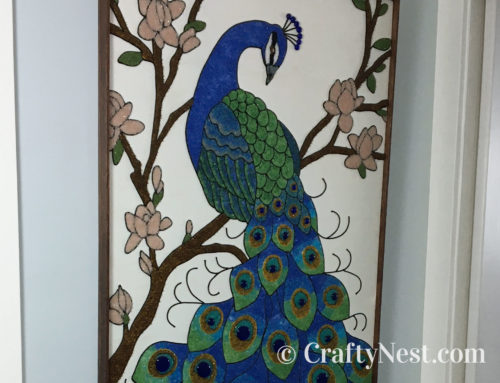
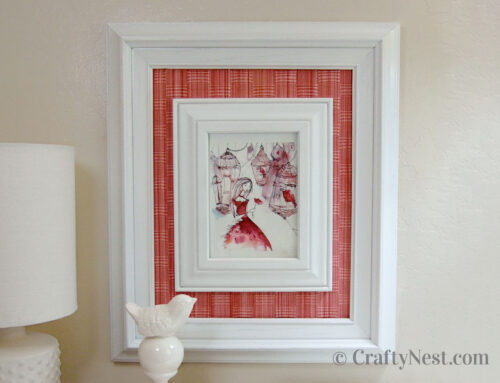
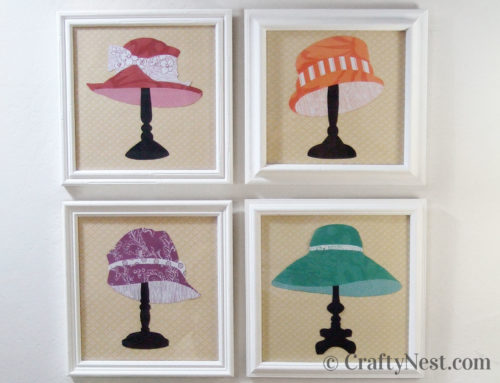
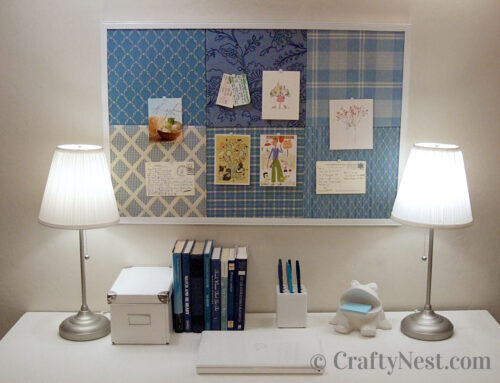
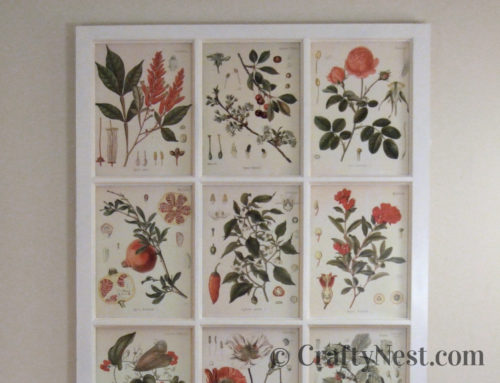
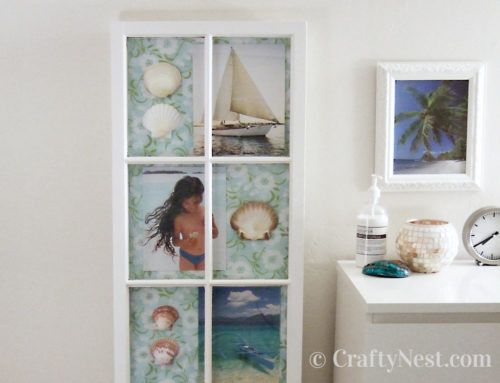
Leave A Comment